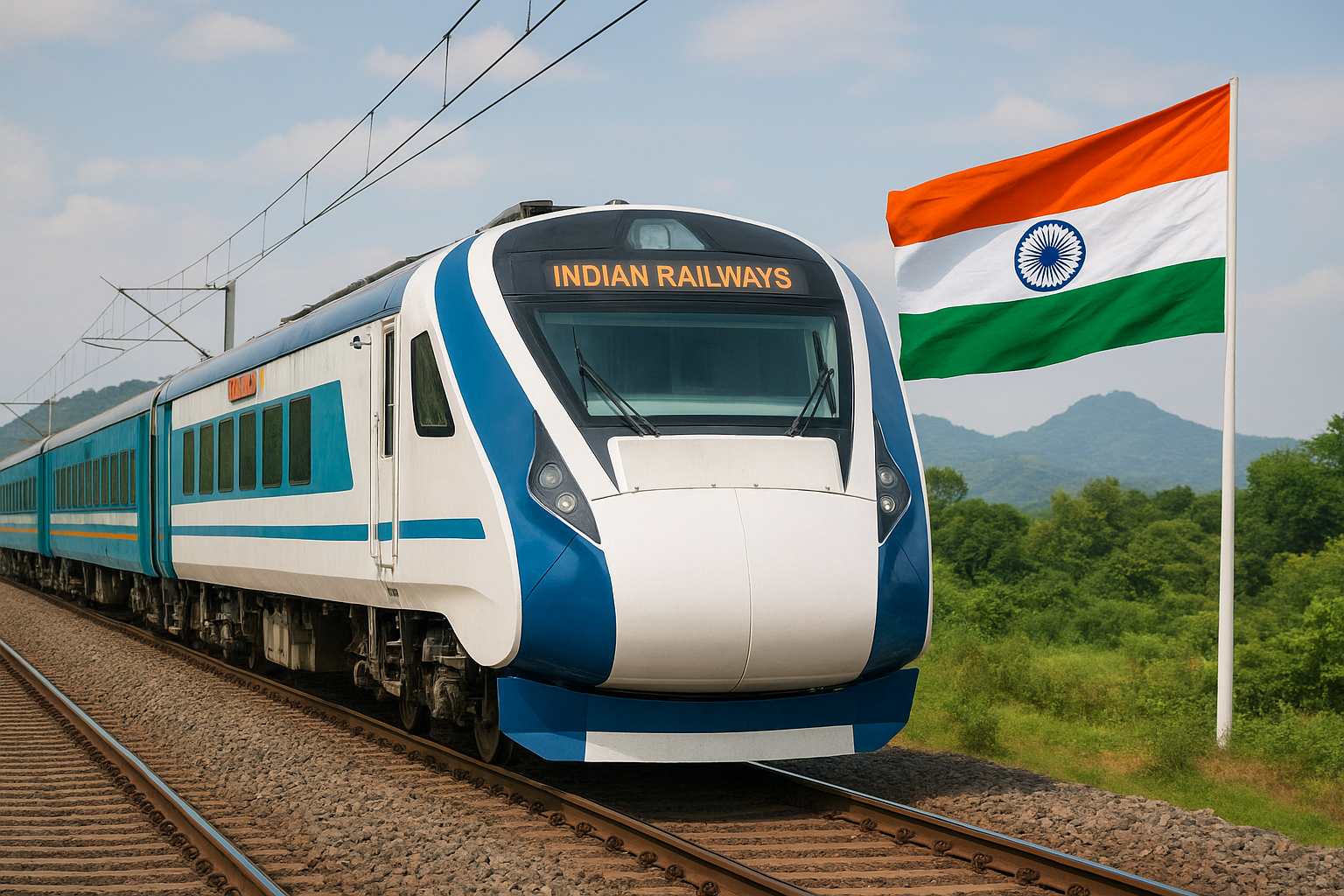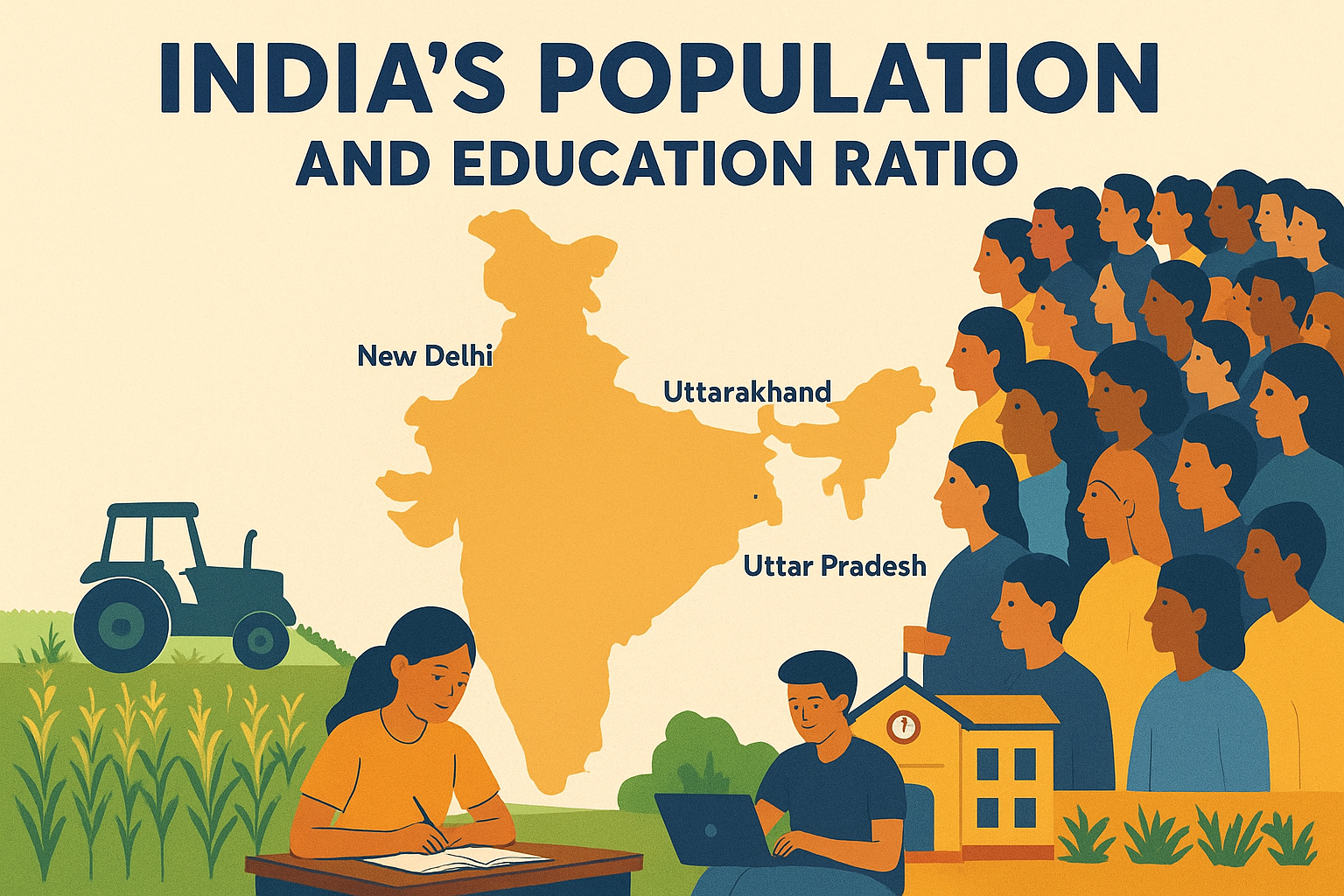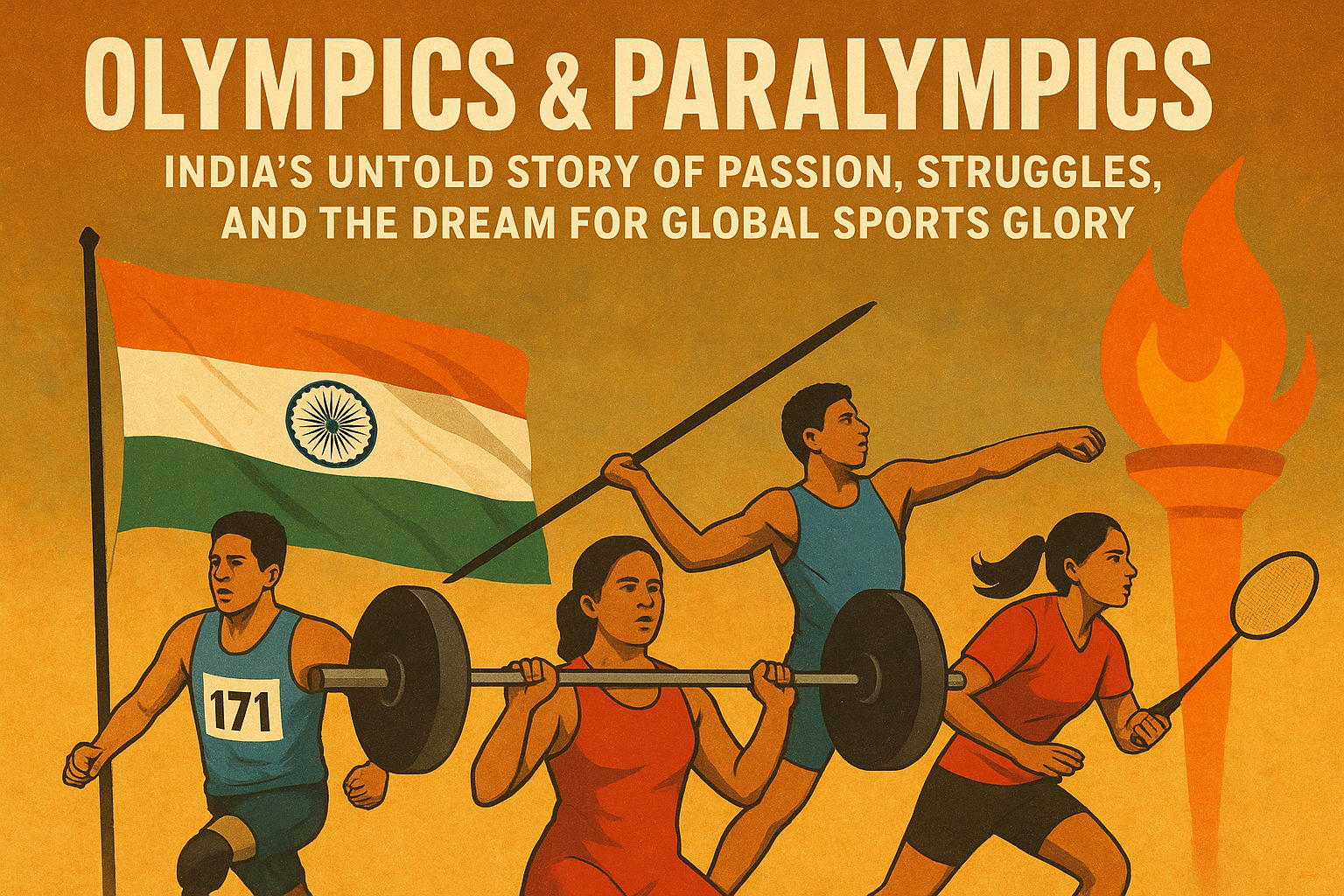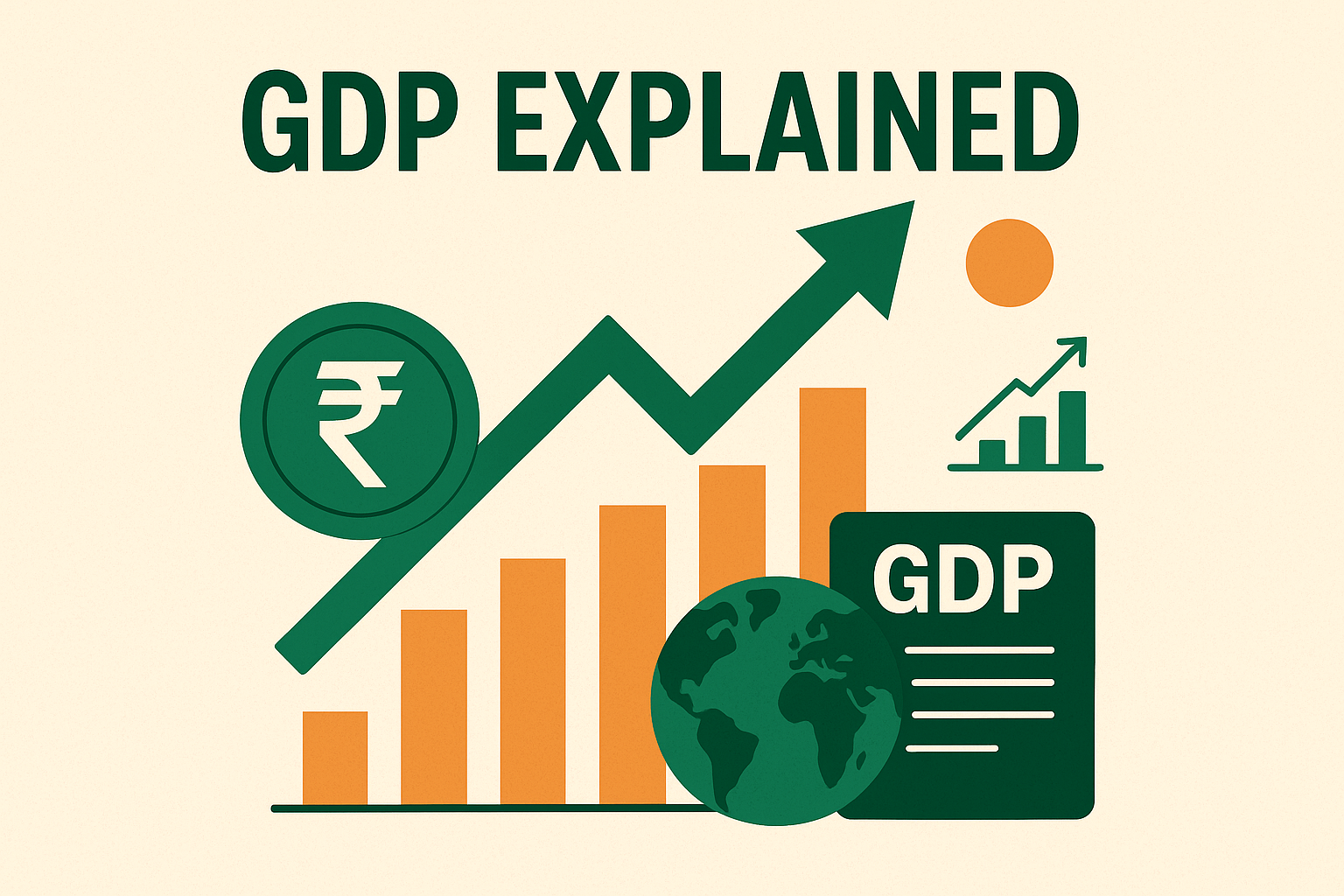Indian Railways: The Lifeline of the Nation
Indian Railways is one of the largest and most complex railway networks in the world. It is not just a mode of transport but the heartbeat of India — connecting villages to metros, people to opportunities, and history to the modern age of development. Established during the British era, this massive network has evolved into a modern, technology-driven system that transports millions of passengers and tons of freight every single day.
A Brief Introduction
Indian Railways (IR) is owned and operated by the Government of India under the Ministry of Railways. It runs more than 13,000 passenger trains and over 8,000 freight trains daily, covering a network of more than 68,000 kilometers across the country. From the narrow tracks of the hills to the broad-gauge lines of the plains, it connects every corner of the nation and serves over 23 million passengers per day.
When Was the Railway Invented?
The concept of railways was born in the early 19th century in England. The world’s first steam locomotive railway, designed by George Stephenson, began operations in 1825 between Stockton and Darlington. The invention revolutionized the global transport industry and laid the foundation for industrial growth worldwide.
The Beginning of Railways in India
India witnessed its first passenger train journey on 16th April 1853, when a train ran from Boree Bunder (Mumbai) to Thane, covering a distance of 34 kilometers. This historic train was hauled by three steam engines named Sahib, Sindh, and Sultan. It marked the beginning of a new era — an era that connected India’s vast geography and brought social and economic integration like never before.
Growth During the British Era
During British rule, the main purpose of developing the railway system was to transport raw materials from the interiors of India to the ports for export to Britain. Initially, the network was small, but it expanded rapidly — connecting major cities like Bombay, Calcutta, Madras, and Delhi. By the time of independence in 1947, India already had around 55,000 km of railway tracks.
Post-Independence Development
After independence, Indian Railways became a national asset. The Government of India took ownership and started modernization projects — converting meter gauge to broad gauge, introducing diesel and electric locomotives, and expanding rail lines to every corner of the nation.
Over the decades, Indian Railways has adopted various technologies: computer-based reservation systems, high-speed trains, bio-toilets, and even semi-bullet trains like the Vande Bharat Express. Today, it is a blend of heritage, technology, and modernization.
Milestones of Indian Railways
- 1853: First passenger train between Mumbai and Thane.
- 1901: Formation of the Railway Board.
- 1951: Indian Railways nationalized under the Government of India.
- 1986: Introduction of computer-based ticketing and reservation system.
- 2002: Launch of IRCTC (Indian Railway Catering and Tourism Corporation).
- 2018: Introduction of India's first semi-high-speed train — Vande Bharat Express.
- 2023 onwards: Electrification, modernization of stations, and bullet train projects under ‘Make in India’ initiative.
Indian Railways – A Symbol of Unity
The railways not only carry passengers and goods but also the cultural essence of India. It connects people of different languages, religions, and backgrounds. Whether it’s the crowded local trains of Mumbai or the luxury of the Palace on Wheels, every journey reflects India’s diversity and unity.
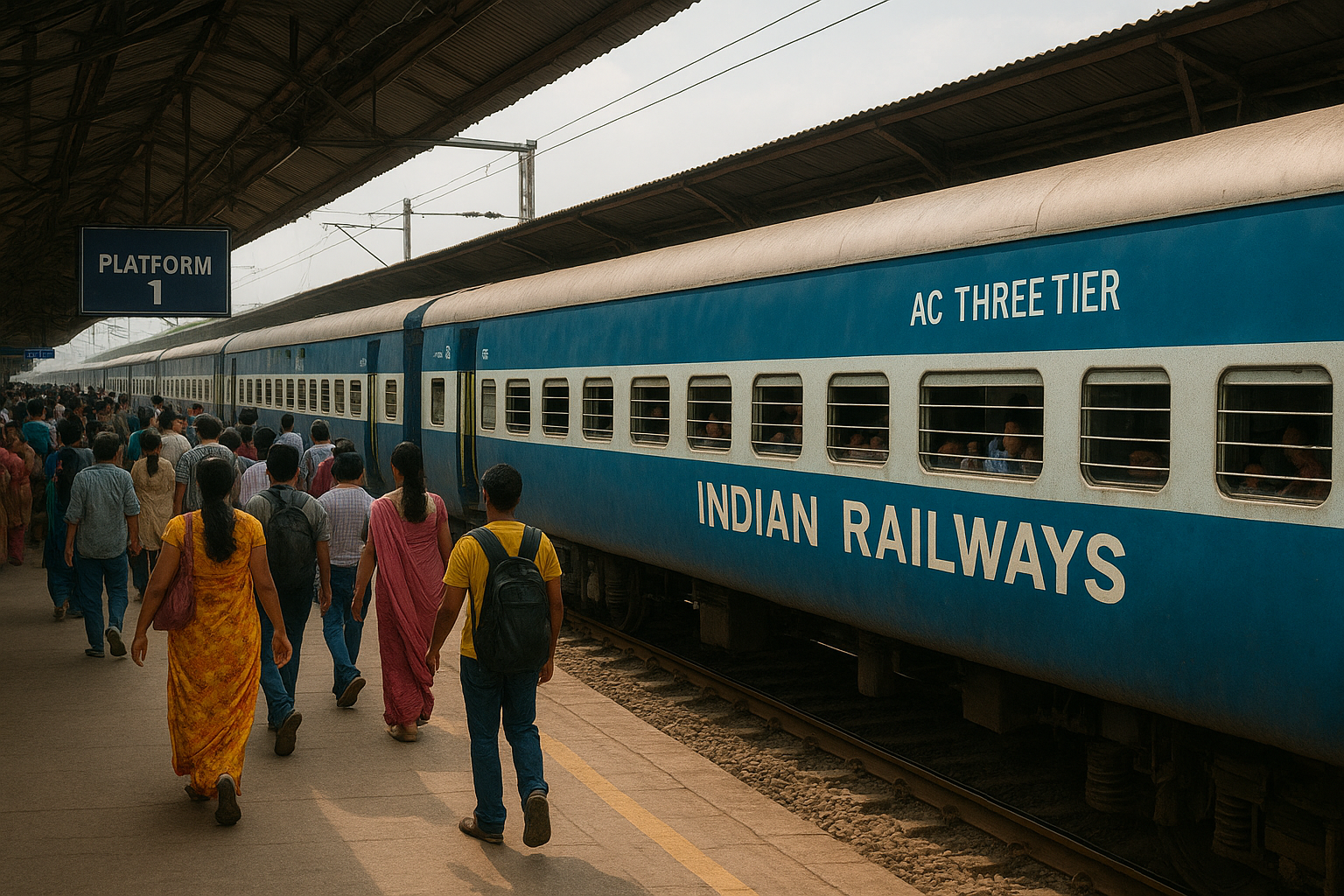
“Indian Railways isn’t just about transportation — it’s a moving emotion that binds India together.”
Structure and Working of Indian Railways
Indian Railways is an engineering marvel that operates through a vast network of tracks, signals, coaches, and locomotives. The system is divided into multiple zones and divisions to ensure smooth management, safety, and punctuality. From maintaining thousands of kilometers of rail lines to scheduling trains with minute precision, every part of this system is organized and monitored round the clock.
Zonal Structure of Indian Railways
Indian Railways is divided into 18 zones, each having its own headquarters. Every zone is further divided into divisions that look after daily operations, maintenance, and planning.
- Central Railway – Headquartered at Mumbai
- Northern Railway – New Delhi
- Eastern Railway – Kolkata
- Western Railway – Mumbai
- Southern Railway – Chennai
- North Eastern Railway – Gorakhpur
- South Central Railway – Secunderabad
- East Coast Railway – Bhubaneswar
- South Western Railway – Hubballi
- North Central Railway – Prayagraj
- South Eastern Railway – Kolkata
- West Central Railway – Jabalpur
- North Western Railway – Jaipur
- South East Central Railway – Bilaspur
- North East Frontier Railway – Guwahati
- East Central Railway – Hajipur
- Metro Railway – Kolkata
- South Coast Railway – Visakhapatnam
How a Train Works – The Process Behind the Journey
The movement of a train depends on three key components: Locomotive (engine), rail tracks, and signaling systems. A train’s operation begins with scheduling at a control center, where timing, routes, and locomotive types are assigned.
Once approved, the train is placed on the track and connected with coaches. The locomotive pulls or pushes the train using powerful diesel or electric engines. The energy is transmitted through wheels via traction motors, creating smooth forward movement.
Train Tracks – How “Patri” Works
Train tracks, commonly called “patri” in Hindi, are made of two parallel steel rails mounted on sleepers. These rails are fixed at a specific distance known as the gauge. The track distributes the train’s load evenly and guides its movement through curves and gradients.
India uses mainly three types of gauges:
- Broad Gauge (1,676 mm): Most common in India; used for main lines and express trains.
- Meter Gauge (1,000 mm): Older system, now being converted to broad gauge.
- Narrow Gauge (762 mm / 610 mm): Found in hilly regions and heritage routes like Darjeeling.
The tracks are made with high-quality steel and regularly inspected for cracks or damage. Sensors and ultrasonic testing machines are used to detect faults before accidents occur. Modern railway lines also include ballastless concrete tracks for better speed and safety.
Signaling System and Safety
The signaling system is the nerve of the railway network. It controls train movement, ensures safe distances, and prevents collisions. Earlier, signals were manual — controlled by levers — but now Indian Railways uses automatic and electronic interlocking systems.
- Color Light Signals: Red (Stop), Yellow (Caution), Green (Go)
- Track Circuits: Detect if a train occupies a section of track
- Automatic Block Systems: Allow multiple trains to operate safely on a route
- KAVACH: India’s indigenous train protection system to prevent accidents
Types of Trains in India
Indian Railways operates a wide variety of trains, each serving different purposes and passengers. Below are the main categories:
- Passenger Trains: Stop at most stations, connecting short distances between towns and villages.
- Express and Superfast Trains: Cover long distances quickly with limited halts; examples include Rajdhani, Shatabdi, and Duronto Express.
- Mail Trains: Carry passengers along with parcels and postal mail.
- Freight Trains: Transport goods like coal, cement, grains, petroleum, and industrial materials.
- Suburban or Local Trains: Serve metropolitan cities like Mumbai, Delhi, and Chennai for daily commuters.
- Luxury Trains: Tourist trains like Palace on Wheels, Maharajas’ Express, and Deccan Odyssey offering royal experiences.
- Metro Trains: Operate in major cities for fast urban transportation.
- Semi High-Speed & Bullet Trains: Modern trains like Vande Bharat and the upcoming Ahmedabad-Mumbai Bullet Train.
Coaches and Train Composition
Every train is made up of multiple coaches designed for various passenger categories and purposes. These include:
- General Class (GS): The most affordable category; often overcrowded.
- Sleeper Class (SL): Non-AC sleeping coaches for long journeys.
- AC 3-Tier (3A): Comfortable air-conditioned travel with three-tier berths.
- AC 2-Tier (2A): Fewer berths per cabin for more comfort.
- First AC (1A): Luxury class with private cabins.
- Chair Car (CC): Sitting arrangement for daytime intercity travel.
- Executive Chair Car (EC): Premium version of Chair Car with more legroom.
- Pantry & Luggage Coaches: Carry food services and baggage.
Crowd and the Spirit of Indian Trains
The sight of crowded trains is common in India, especially during festivals and holidays. Despite the rush, trains remain the most reliable and affordable mode of long-distance travel. Millions depend on them daily to reach their workplaces, families, and dreams. The energy and life at railway stations reflect the spirit of the Indian people — hardworking, hopeful, and always moving forward.
“Every train tells a story — of journeys, reunions, and endless possibilities.”
Ticketing System and Reservation in Indian Railways
Traveling by train in India involves one of the world’s largest ticketing and reservation systems. Millions of tickets are booked every day, either online through IRCTC (Indian Railway Catering and Tourism Corporation) or offline through railway reservation counters. The ticketing process ensures that passengers can travel conveniently, even on busy routes.
Types of Railway Tickets in India
- General Ticket: For unreserved coaches; cheapest and available for short distances. No prior booking required.
- Reserved Ticket: Requires advance booking; includes Sleeper, AC, and Chair Car classes.
- Tatkal Ticket: Emergency ticket scheme available one day before travel, with slightly higher fare.
- Premium Tatkal Ticket: Dynamic pricing for last-minute confirmed seats.
- Season Ticket: Monthly or quarterly passes for daily commuters, mostly in suburban trains.
- Platform Ticket: Allows entry to platforms without travel, valid for limited time.
- e-Ticket (Online Ticket): Booked through IRCTC portal or app, with digital confirmation and QR code.
- Current Booking: Facility to book available seats up to a few hours before departure.
The IRCTC platform is the backbone of Indian Railways’ digital transformation. It allows users to book tickets, order food, check train status, and plan trips easily. It supports millions of users simultaneously during peak booking hours.
Indian Railways – Major and Famous Railway Stations
India is home to thousands of railway stations, each unique in design, architecture, and importance. Some stations are historic landmarks, while others are modern transport hubs connecting the nation.
List of Major and Famous Stations:
- Howrah Junction (West Bengal): One of the oldest and busiest stations in India with 23 platforms.
- New Delhi Railway Station (Delhi): Central hub for northern India; handles more than 500,000 passengers daily.
- Chhatrapati Shivaji Maharaj Terminus (Mumbai): UNESCO World Heritage Site and architectural marvel.
- Chennai Central (Tamil Nadu): Major southern gateway connecting all parts of India.
- Kanpur Central (Uttar Pradesh): One of the largest stations in terms of area and passenger movement.
- Prayagraj Junction (U.P.): Key station of the North Central Zone with modern facilities.
- Secunderabad Junction (Telangana): Important hub in southern India with large passenger volume.
- Ahmedabad Junction (Gujarat): Gateway to western India and industrial centers.
- Vijayawada Junction (Andhra Pradesh): Major connecting point for east and south routes.
- Guwahati Station (Assam): Lifeline of the northeastern region of India.
Employment and Jobs in Indian Railways
Indian Railways is one of the largest employers in the world. It provides job opportunities to millions of people across technical and non-technical fields. The recruitment process is conducted through the Railway Recruitment Board (RRB) and Railway Recruitment Cell (RRC) for various posts.
Major Job Categories in Indian Railways
- Group A: Higher administrative positions like officers selected through UPSC exams.
- Group B: Supervisory level officers, promoted from Group C.
- Group C: Clerks, technicians, junior engineers, and station masters.
- Group D: Track maintainers, helpers, and other ground-level staff.
Apart from direct jobs, Indian Railways also creates indirect employment in sectors such as catering, tourism, manufacturing, logistics, and small-scale vendors near stations.
Recruitment and Exams
Recruitment for Indian Railways is conducted through:
- RRB NTPC: Non-technical popular categories such as clerks and assistants.
- RRB Group D: For technical maintenance and ground staff.
- RRB JE: Junior Engineer positions for engineering graduates.
- RRB ALP: Assistant Loco Pilot and technician roles.
- UPSC IRSE: For Indian Railway Service of Engineers and administrative officers.
Why Indian Railways is a Major Job Creator
Railways is the backbone of India’s transport infrastructure, and its operations require skilled manpower at every level. From drivers and signal operators to engineers and IT professionals, the system runs 24x7 with human efficiency. The consistent demand for workers ensures stable employment, especially in semi-urban and rural areas.
Additionally, various government schemes like Make in India and Digital India have encouraged modernization projects, resulting in more jobs in rail construction, technology, and management.
Contribution to Indian Economy and Development
Indian Railways contributes significantly to the nation’s economy. It is not only a transport system but also a major player in industrial growth, tourism, and national integration.
- Freight Transport: The largest share of rail income comes from goods transportation like coal, cement, and fertilizers.
- Tourism Development: Luxury trains, heritage routes, and hill railways attract both domestic and international tourists.
- Industrial Connectivity: Industrial corridors and freight corridors improve logistics and reduce cost.
- Green Energy Initiatives: Electrification and solar-powered stations reduce carbon emissions.
- Digitalization: Online ticketing, e-payments, and smart card systems enhance efficiency.
With modernization, electrification, and the development of high-speed corridors, Indian Railways continues to be a vital force driving India’s progress toward a sustainable and connected future.
“Indian Railways moves not just people and goods, but also dreams, hopes, and progress across the nation.”
Modernization and Technological Advancements
Indian Railways has entered a new era of modernization, adopting advanced technologies to improve safety, comfort, and efficiency. From high-speed trains to AI-based monitoring systems, the railway system is continuously evolving to match global standards.
High-Speed and Bullet Trains
The most ambitious project is the Ahmedabad–Mumbai Bullet Train, India’s first high-speed rail line built with Japanese collaboration under the Shinkansen model. It will reduce travel time between the two cities from 8 hours to just 2 hours.
The Vande Bharat Express series, fully designed and manufactured in India, represents a significant leap toward faster, safer, and more comfortable intercity travel. These semi-high-speed trains feature automatic doors, GPS-based information systems, and energy-efficient design.
Automation and Digitalization
Indian Railways is increasingly using digital technologies for better management and transparency. Key innovations include:
- AI-Based Surveillance: Cameras and sensors at stations to ensure passenger safety.
- Online Reservation: IRCTC’s upgraded systems handle millions of transactions daily.
- GPS Tracking: Live train tracking through mobile apps and station displays.
- Smart Coaches: Equipped with automatic doors, bio-toilets, and Wi-Fi.
- Paperless Ticketing: Mobile-based tickets and QR codes reduce paper usage.
Green and Sustainable Railways
To reduce carbon emissions, Indian Railways is moving toward 100% electrification. Solar panels are being installed on station roofs and coaches. The goal is to make the entire network net-zero carbon by 2030.
Bio-diesel engines, energy-efficient lighting, and waste-management systems are also being introduced to make railways environmentally sustainable.
Heritage and Tourism Trains of India
Indian Railways is not only about speed and technology — it also preserves the country’s rich heritage. Several heritage lines and luxury tourist trains continue to attract visitors from all over the world.
Famous Heritage and Tourist Trains
- Palace on Wheels: Royal train of Rajasthan offering luxurious travel with heritage interiors.
- Maharajas’ Express: One of the world’s most luxurious trains offering premium travel experience.
- Deccan Odyssey: Covers Maharashtra and Goa’s cultural routes in grandeur.
- Toy Train – Darjeeling Himalayan Railway: UNESCO World Heritage Site famous for scenic routes.
- Kalka–Shimla Railway: A narrow-gauge marvel through mountains and tunnels.
- Nilgiri Mountain Railway: Connects Mettupalayam to Ooty through dense forests and bridges.
Challenges Faced by Indian Railways
Despite its massive success, Indian Railways faces several challenges in operations and modernization.
- Overcrowding: Passenger demand often exceeds capacity, especially during peak seasons.
- Infrastructure Maintenance: Aging tracks and stations require continuous maintenance.
- Accidents and Safety Issues: Though safety has improved, human errors and weather conditions remain concerns.
- Financial Pressure: Balancing affordable fares with high maintenance costs is difficult.
- Technology Upgradation: Need for faster integration of digital systems across zones.
However, the government’s focus on modernization, smart stations, and high-speed corridors aims to overcome these challenges in the coming decade.
Future of Indian Railways
The future of Indian Railways is bright and forward-looking. With projects like Dedicated Freight Corridors, Smart Stations Mission, Bullet Trains, and full electrification, India is transforming its railways into a symbol of modern infrastructure.
Plans include driverless trains, AI-based scheduling, renewable-energy power stations, and world-class station redevelopment projects such as New Delhi and Ahmedabad.
In coming years, Indian Railways will not just remain the country’s transport lifeline, but also a global example of sustainable mobility and innovation.
Conclusion: The Lifeline of a Billion Dreams
From steam engines of the 19th century to bullet trains of the 21st century, Indian Railways has traveled a long and inspiring journey. It symbolizes India’s unity, progress, and determination to connect every citizen.
Every day, millions of people step into stations with hope — to reach jobs, schools, families, or new beginnings. The rhythmic sound of trains on steel tracks echoes the nation’s growth story.
“Indian Railways is not merely a network of tracks — it is a bridge between aspirations and destinations.”
